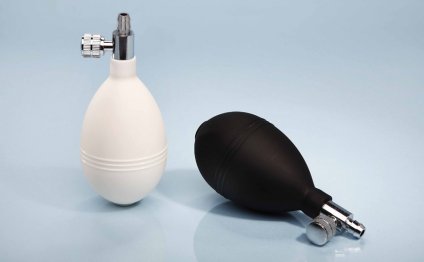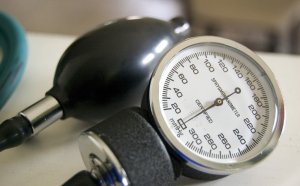
Blood pressure pumps
Every medical soap opera seems to include at least one blood pressure check. But what exactly is blood pressure, and why do we worry so much about it?
Blood pressure – what is it?
When you have your blood pressure checked, you will be given two figures, the higher ‘over’ the lower (140 over 80, for instance). Your heart pumps blood around your body day and night, supplying it with the oxygen it needs to work. Your arteries carry blood away from the heart and your veins carry it back. The higher figure is the pressure inside your arteries - measured in millimetres of mercury (mm Hg) - while your heart is pumping, and the lower figure is the pressure when your heart is resting between beats.
Blood pressure – why worry?
Like the water in your pipes at home, your blood needs to be under some pressure to keep flowing (you can see below what happens if your blood pressure is too low). But raised blood pressure can lead to a heart attack or stroke.
Blood pressure – how do I know?
Raised blood pressure doesn’t cause symptoms, so the only way of knowing if you’re at risk of a stroke is by having it checked regularly (at least once a year when you reach 60, and every 2-3 years from 45 to 60). If your blood pressure is raised, your doctor or nurse will ask you to come back and have it measured again. Blood pressure naturally goes up and down during the day, and it’s only a problem if the upper level is consistently above 160, or the lower level above 100 (less if you have diabetes or kidney problems).
Blood pressure – what can I do?
There is plenty that you can do to bring your blood pressure down and keep it down. Even if you need to take tablets as well, adopting a healthy lifestyle can help to keep the number of tablets you need to a minimum.
The rewards are huge. If you can cut your blood pressure by about 10 mm Hg (say, from 160 to 150 mm Hg) you can reduce your risk of stroke by an amazing 40%. And you can achieve that by, for instance, cutting your weight by just 10% if you’re overweight. Other measures include:
- Reducing the salt in your diet to about 6 grams a day (taking the salt cellar off the table; cutting down on processed foods which often contain ‘hidden’ salt and flavouring food with herbs and spices rather than salt will all help).
- Regular aerobic exercise (the kind that gets you mildly out of puff) – 30 minutes of exercise five days a week is ideal, but you can break yourself in gently! Try brisk walking, cycling or swimming.
Low blood pressure – how low can you go?
With all the focus on high blood pressure, it can be hard to remember that low blood pressure can be a problem, too. As a rule, the fitter you are, the lower your blood pressure. As long as you feel fine, a blood pressure as low as 100 over 60 is okay. However, seriously low blood pressure can cause:
- Light-headedness (especially when you stand up quickly).
- Breathlessness.
- Palpitations.
Some medical conditions that make your heart go too fast or too slowly can cause low blood pressure, as can some hormone disorders and, in the short term, so can blood loss or being very dehydrated. Fortunately, low blood pressure itself rarely causes serious problems.
RELATED VIDEO



Share this Post
Related posts
High Blood pressure cuff
Esther Okaya has a health problem that is a growing concern in Sub-Saharan Africa: high blood pressure. Gregory Warner/NPR…
Read MoreBlood pressure indicator
Blood pressure is the measure of the force of blood pushing against blood vessel walls. A normal value is 120/80 mmHg or…
Read More











